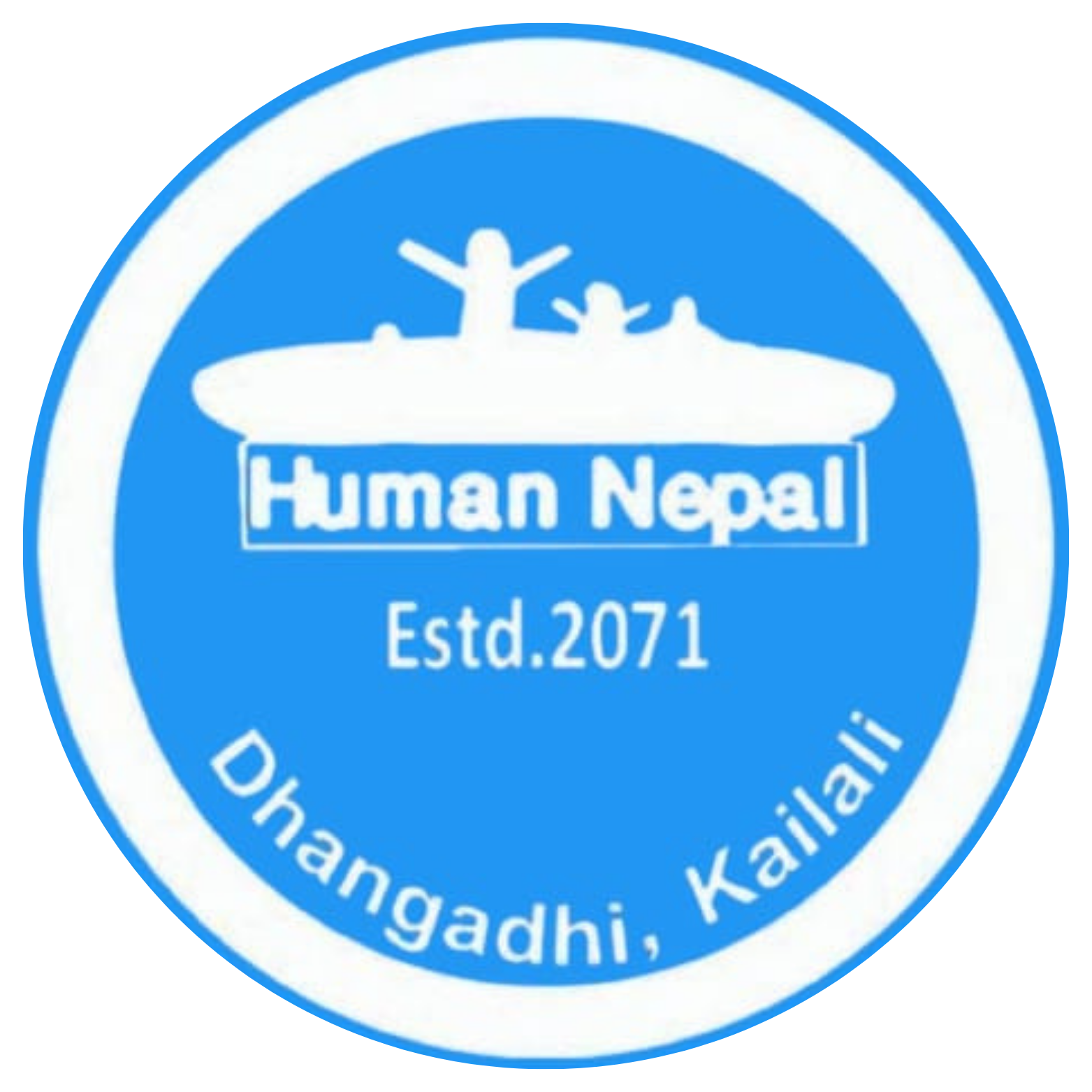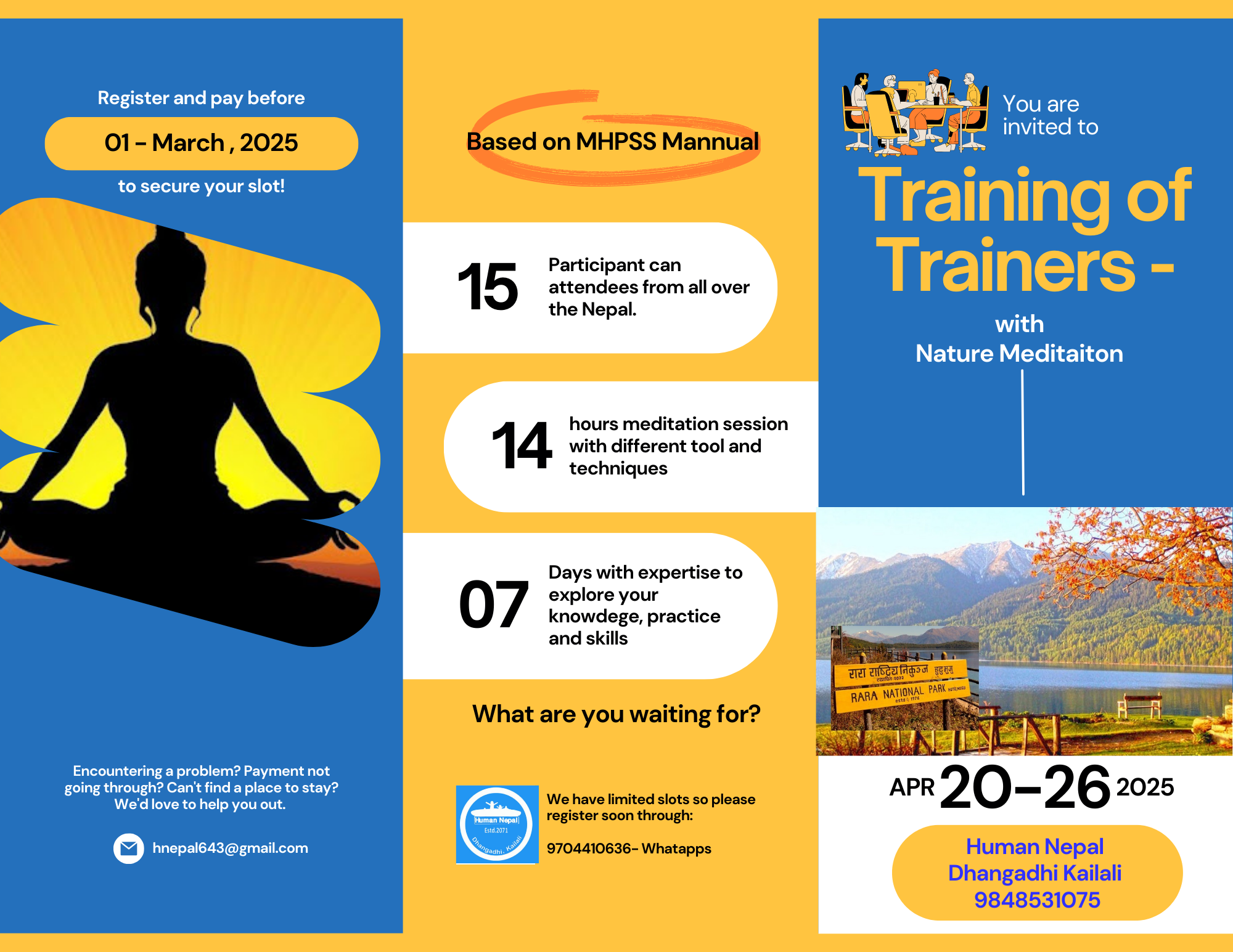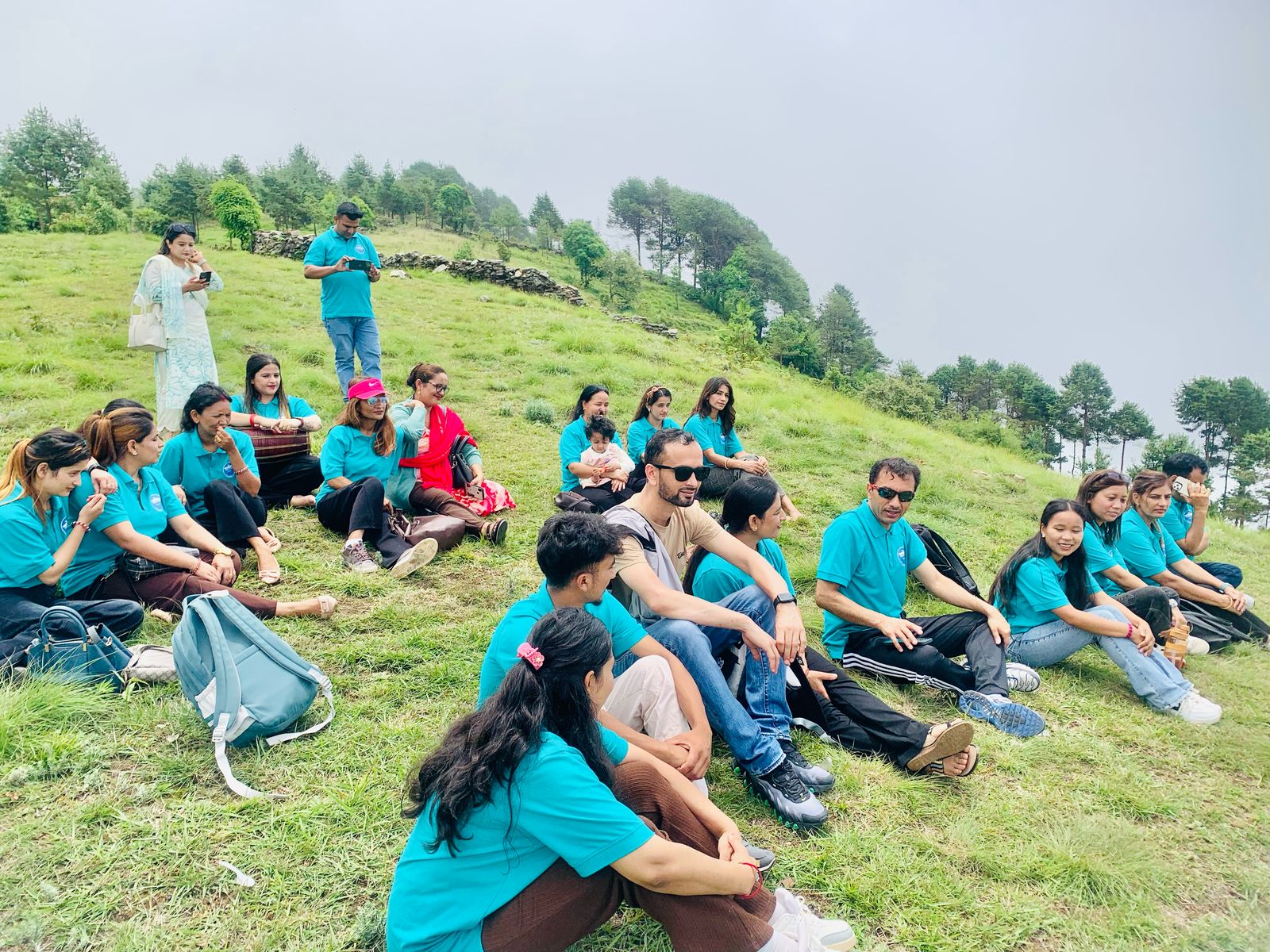HIV TREATMENT AND PREVENTION REPORT USING CASCADE ANALYSIS IN MAKWANPUR DISTRICT, NEPAL, DURING THE COVID-19 PANDEMIC: A RETROSPECTIVE COHORT STUDY
Sadikshya Poudel1; Mahesh Dev Bhattarai2; Milan Neupane3
1 Program Manager, Makwanpur District ,General Welfare Pratisthan, Gyaneswor, Kathmandu, Nepal
2 Executive Directors, Makwanpur District, General Welfare Pratisthan, Gyaneswor, Kathmandu, Nepal
3 Project Coordinator, Makwanpur District ,General Welfare Pratisthan, Gyaneswor, Kathmandu, Nepal
DOI: https://doi.org/10.3126/saarctb.v22i1.72471
Received: 3rd Nov Accepted:21st Nov Published: 31st Dec This article is available at:https://www.saarctb.org/wp-content/uploads/2024/08/STAC_Journal_2023_VOL21_2024-AUGUST-2.pdf
HIV prevalence in Nepal varies across different population groups, indicating a concentrated epidemic.1 According tothe National Centre for
AIDS and STD Control, the HIV prevalence rate among adults in Nepal was 0.11% in 2023, with one new case reported daily.2 HIV prevalence is higher among key populations, including people who inject drugs (0.2%), men whohave sex with men (4.7%), female sex workers (2.5%), and clients of female sex workers (7.2%).3 Due to the nature oftheir work, female sex workers (FSWs), are at particularly high risk for HIV transmission, making them a priority group for targeted HIV prevention and treatment efforts.
Despite the implementation of various interventions aimed at promoting safer sexual practices, increasing HIV testing,and ensuring access to treatment for vulnerable populations, there remains a significant gap in evaluating their effectiveness. Prior studies have primarily focused on estimating HIV prevalence and identifying at-risk populations but have largely overlooked the operational success and gaps within the HIV care continuum particularly during theCOVID-19 pandemic.4,5
Given that the COVID-19 pandemic persisted into 2021, people living with HIV were affected in various ways such as disruptions to healthcare access, interruptions in antiretroviral treatment (ART), changes in health-seeking behavior due to fear of COVID-19, increased mental health challenges, and heightened stigma and discrimination.6 These factors exacerbated the vulnerabilities of people living with HIV. Despite these challenges, there is limited research evaluating how HIV care and prevention programs adapted to these disruptions, particularly in resource-limited settings like Nepal.
This report aims to address these gaps by evaluating the effectiveness of HIV interventions targeting FSWs in Makwanpur district during the COVID-19 pandemic. Utilizing cascade analysis, it examines key outcomes across theHIV care continuum, including HIV testing, ART enrollment, and viral load suppression. By highlighting operational challenges and successes, this research provides actionable insights to improve HIV prevention and treatment efforts in similar contexts.
Study Design
This study employed a retrospective cohort design to evaluate HIV prevention and treatment activities in Makwanpur district, Nepal. A retrospective cohort design was chosen as it allows for the analysis of existing data to assess outcomes over time. The cohort consisted of high-risk individuals, participated in HIV interventions. This design enabled the evaluation of the effectiveness of HIV programs implemented during the COVID-19 pandemic, usinghistorical data to track progress across the HIV care continuum without the need for new data collection.
Study Setting
The study was conducted in Makwanpur district, Nepal, an area known for significant challenges related to humantrafficking and high mobility. As one of the twenty-six districts in Nepal with high rates of girls trafficking, Makwanpurserves as a key transit point between Kathmandu and Bihar state in India. Hetauda, the district headquarters, is an industrial hub that attracts a transient population, increasing vulnerability to HIV-related risks such as trafficking, drug use, and sexual exploitation. As a part of EpiC Nepal Project (Meeting Targets and Maintaining Epidemic Control), General Welfare Pratisthan (GWP) is implementing HIV prevention care and treatment services in Makwanpur district. GWP is a non-governmental, non-profit organization dedicated to improving the well-being of marginalized communities in Nepal. Since its establishment in 1993, GWP has been actively engaged in social welfare initiatives, particularly those focused on vulnerable populations, including HIV prevention and treatment efforts.
Study Population
The study population included both key populations and priority populations. Key populations included female sex workers (FSWs), while priority populations (PPs) comprised clients of FSWs and other high-risk individuals. Thesegroups were identified based on behaviours that increase the risk of HIV transmission, such as unprotected sexual contact, needle sharing, and frequent mobility. The study was conducted in identified “hotspots” within Makwanpur district, an area known for high-risk activities, including unprotected sex and drug use. HIV interventions were implemented throughout the year 2021, from January to December.
Variables
Independent Variables
- Risk Behaviours: Unprotected sexual intercourse, alcohol consumption, needle sharing, multiple sexual partners, HIV-positive partners, age under 25, lack of prior HIV testing, and history of sex work.
- Population Groups: FSWs and PPs, including clients of FSWs and other high-risk individuals.
- Interventions: Educational campaigns, condom distribution, comprehensive sex education, counselling services, andstigma reduction programs.
Dependent Variables
- HIV Testing: Number and proportion of FSWs and PPs tested compared to targets.
- HIV Diagnosis: Number of positive HIV tests.
- ART Enrolment: Number of HIV-positive individuals enrolled in antiretroviral therapy (ART).
- Viral Load Testing: Number of individuals tested and proportion achieving viral suppression (viral load <1000copies/ml).
- PrEP Uptake: Number of high-risk individuals prescribed pre-exposure prophylaxis (PrEP).
Process/Operational Variables
- Hotspot Mapping: Identification of areas with high concentrations of HIV-related risk behaviours.
- Program Coverage: Number of FSWs and PPs reached by interventions, compared to targets.
- Cascade Analysis Indicators: Proportions at each stage of the HIV care continuum (e.g., HIV testing, ART enrolment, viral suppression).
Data Collection Procedure
Risk Behaviour Assessment: HIV testing was offered to individuals based on risk behaviours such as unprotected sex,lack of previous HIV testing, age under 25, history of sex work, multiple sexual partners, HIV-positive partners, alcohol use, and needle sharing.
Hotspot Mapping: Local informants or members of the target population identified areas with concentrated HIV riskbehaviours (e.g., brothels, bars, drug-use areas) using mapping techniques. These locations were validated through triangulation from multiple sources.
HIV Testing and ART Enrolment: Individuals identified through hotspot mapping were offered voluntary HIV testing. Those testing positive were enrolled in ART according to national guidelines. Pre-exposure prophylaxis (PrEP) wasalso
monitored for high-risk individuals.
Viral Load Testing: Individuals who initiated ART underwent viral load testing to monitor treatment efficacy. Viral load suppression (defined as <1000 copies/ml) was used as a marker for reduced HIV transmission risk.
Interventions: HIV prevention interventions included educational campaigns, sex education, condom distribution,condom negotiation skills training, counselling, and stigma reduction activities.
Data Entry and Analysis
Data was entered into a secure database by trained GWP personnel. Cascade analysis was employed to visualize the flow of individuals through various stages of HIV care, from initial contact and HIV testing to ART enrolment and viral load suppression. This method provides valuable insights into intervention effectiveness and tracks progress across key stages of HIV care.7 By identifying gaps in the care continuum, cascade analysis helps measure the success of HIVprevention and treatment interventions, offering crucial data to strengthen on-going efforts in the field.
This study used de-identified program data from the General Welfare Pratisthan (GWP), approved by the Social Welfare Council (Affln. 1366/049/050) through an agreement with Family Health International (FHI 360 Subaward ID#: 1297.0305). The data was collected for public health evaluation purposes, without any direct interventions or participant interactions, ensuring confidentiality. Since the study relied on de-identified, publicly available data, it followed ethical guidelines and was consistent with WHO recommendations, which indicate that studies using public information and posing no risk to individuals are not subject to review by a Research Ethics Committee (REC).8
Individual and/or small group level HIV prevention interventions were successfully delivered to 333
female sex workers (FSWs), surpassing the annual target of 274 by 121%, despite challenges posed by the COVID-19 pandemic. Similarly, standardized, evidence-based interventions, which are programs proven effective in improving outcomes based on research and formal studies, were provided to 230 priority populations (PPs), achieving 101% of the annual target of 228. These interventions focused on promoting HIV prevention behaviors and increasing service uptake. Table 1 and 2 outline the service uptake and outcomes for FSWs and PPs, including HIV testing, positivity rates, ART enrollment, and viral load suppression. The cascade analyses, presented in Figures 1 and 2, further illustrate the flow of FSWs and PPs through each stage of the HIV care continuum.
|
Table 1: The number of Female sex workers (FSWs) reached, tested for HIV, found HIV positive, enrolled for treatment and tested for viral load |
|||
|
Category |
Indicator |
n |
% |
|
Total Reach |
Total FSWsreached |
333 |
100 |
|
Tested for HIV |
107 |
32.04 |
|
|
HIV Testing |
Tested for HIV |
107 |
100 |
|
Found HIV positive |
3 |
2.8 |
|
|
HIV Treatment |
Found HIV positive |
3 |
100 |
|
Enrolled in ART |
3 |
100 |
|
|
VL Testing* |
Tested for VL andreceived result |
18 |
100 |
|
Achieved VL suppression (of those tested for VL) |
16 |
88.89 |
|
Viral Load (VL) Testing* VL testing was conducted for 18 FSWs, which included individuals newly diagnosed with HIV during the reporting period as well as those who were previously diagnosed and already on ART or re-engaged in care.
|
Table 2: The number of Priority Populations(PPs) reached, tested for HIV, found HIV positive, enrolled for treatment and tested for viral load |
|||
|
Category |
Indicator |
n |
% |
|
Total Reach |
Total PPs reached |
230 |
100 |
|
Tested for HIV |
109 |
47.39 |
|
|
HIV Testing |
Tested for HIV |
109 |
100 |
|
Found HIV positive |
14 |
12.84 |
|
|
HIV Treatment |
Found HIV positive |
14 |
100 |
|
Enrolled in ART |
35* |
32.11 |
|
|
VL Testing* |
Tested for VL andreceived result |
132 |
100 |
|
Achieved VL suppression (of those tested for VL) |
125 |
94.7 |
|
35* PPs initiating antiretroviral therapy (ART) exceeded the number of newly diagnosed cases (14), due to theinclusion of previously diagnosed individuals who were not on ART or had been lost to follow-up before the intervention.
Viral Load (VL) Testing* VL testing was conducted for 132 PPs, which included individuals newly diagnosed with HIV during the reporting period as well as those who were previously diagnosed and already on ART or re-engaged in care.
Figure 1: Cross-sectional HIV continuum of prevention, care, and treatment cascade for female sex workers in 2021.
Orange arrow shows the difference between achieved and target while blue arrow shows the difference within achieved populations.
KP_PREV = Number of key populations (female sex workers) reached with individual and / or small group level HIV prevention interventions designed for the target population
HTS_TST = Number of individuals who received HIV testing services and received their test results HTS_TST_POS =Number of individuals newly identified HIV positive
TX_NEW = Number of individuals newly enrolled on antiretroviral therapy
TX_PVLS (D) = Total number of ART patients enrolled in the program with a viral load result documented in themedical or laboratory records/ LIS within the past 12 months
TX_PVLS (N) = Number of ART patients with suppressed viral load result documented in the medical or laboratory records within the past 12 months
Related Blogs
Your go-to source for mental health insights, tools, and advice.






